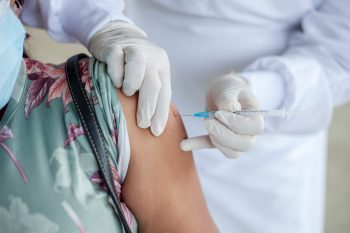Before the examination, the patient should fast at least six hours to avoid the meteorism, which deteriorates the quality of the test, and to achieve an adequate filling of the gallbladder, essential to study it correctly.
It begins with the patient lying on his back (supine decubitus), with the lower part of the chest and the upper half of the abdomen exposed. A gel is applied for the correct transmission of ultrasound. There is no specific order for the examination of the organs, the one described below could be one of them.
The liver, the larger solid viscera, is located under the right hemidiaphragm and is protected by the last right ribs. It extends to the left, to the midline of the abdomen and a small part is under the heart. The patient is asked to fill the air chest and keep it briefly inside. This maneuver lowers the diaphragm and, consequently, the liver becomes more accessible to the subcostal exploration. Even so, it is not always possible to see all the liver under the ribs, being necessary to the study it by intercostal route. Besides much part of the hepatic parenchyma, other structures are also identified, such as bile ducts, portal vein, gallbladder and, out of the liver, the right kidney located below the right hepatic lobe.
The patient is then instructed to put on his left side (left lateral decubitus) to change the visualization of the liver, which being now in the upper abdomen, “hangs” to the midline and becomes more visible below the ribs. This position is also suitable for the diagnosis of possible gallstones (cholelithiasis).

Again in the supine position, an attempt is made to study the pancreas, which is located in the midline of the abdomen. Just as the liver is visible in almost all patients, this is not the case with this small organ located in the retroperitoneum, in front of the aorta, behind the stomach and surrounded by the duodenum and first intestinal loops. In many patients, this location causes the adjacent air to prevent its visualization, even though the patient is fasting.
Arterial and venous vascular structures, such as celiac trunk, superior mesenteric artery, splenoportal venous axis, splenomesenteric venous confluence, inferior vena cava and aortic artery, may also be visible in this middle area of the abdomen.
Finally, the spleen is explored, which is located on the side opposite the liver, under the left hemidiaphragm. Smaller than the liver, it often requires intercostal study. Below the spleen is the left kidney, which is easily visible both in the supine position and in the right lateral decubitus position.
During the entire exploration, multiple “cuts” (longitudinal, transverse and oblique) are made to visualize all the organs and corroborate their normality or pathological findings.
Ultrasound examination of the upper abdomen is in theory a “simple” technique, but the results obtained depend on and are directly related to the knowledge, skill and experience of the physician who performs it.
At the Viral Hepatitis Study Foundation Clinic, we are specialists in offering ultrasound diagnosis, offering you the best treatment. Contact us!





